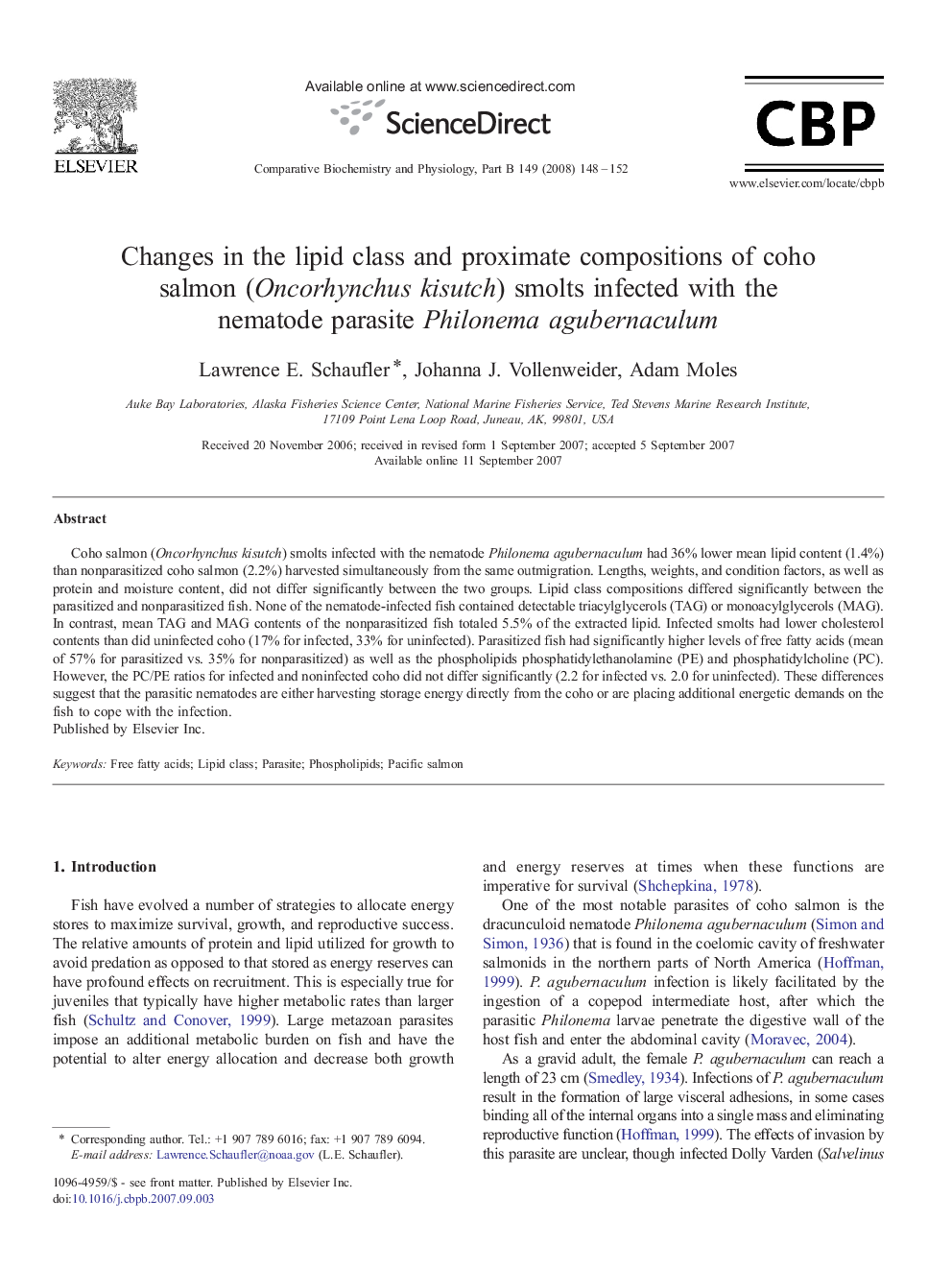| Article ID | Journal | Published Year | Pages | File Type |
|---|---|---|---|---|
| 1976510 | Comparative Biochemistry and Physiology Part B: Biochemistry and Molecular Biology | 2008 | 5 Pages |
Coho salmon (Oncorhynchus kisutch) smolts infected with the nematode Philonema agubernaculum had 36% lower mean lipid content (1.4%) than nonparasitized coho salmon (2.2%) harvested simultaneously from the same outmigration. Lengths, weights, and condition factors, as well as protein and moisture content, did not differ significantly between the two groups. Lipid class compositions differed significantly between the parasitized and nonparasitized fish. None of the nematode-infected fish contained detectable triacylglycerols (TAG) or monoacylglycerols (MAG). In contrast, mean TAG and MAG contents of the nonparasitized fish totaled 5.5% of the extracted lipid. Infected smolts had lower cholesterol contents than did uninfected coho (17% for infected, 33% for uninfected). Parasitized fish had significantly higher levels of free fatty acids (mean of 57% for parasitized vs. 35% for nonparasitized) as well as the phospholipids phosphatidylethanolamine (PE) and phosphatidylcholine (PC). However, the PC/PE ratios for infected and noninfected coho did not differ significantly (2.2 for infected vs. 2.0 for uninfected). These differences suggest that the parasitic nematodes are either harvesting storage energy directly from the coho or are placing additional energetic demands on the fish to cope with the infection.
